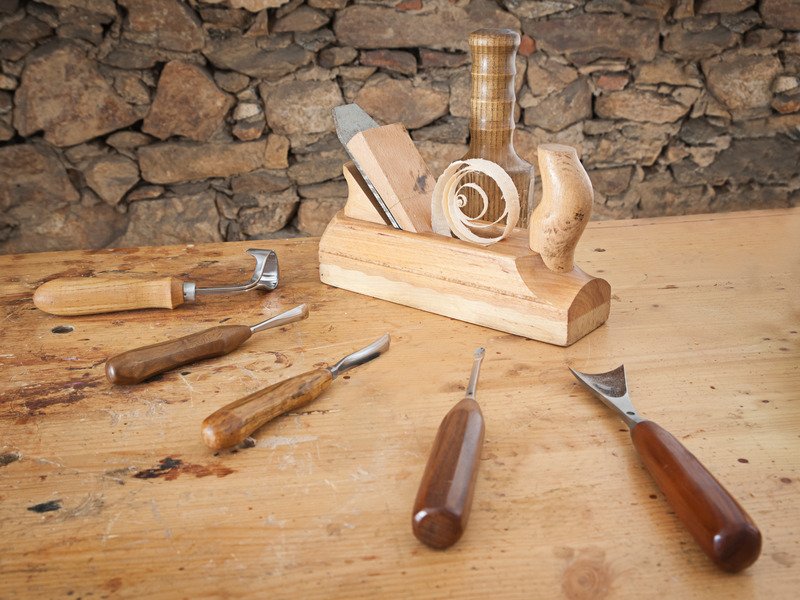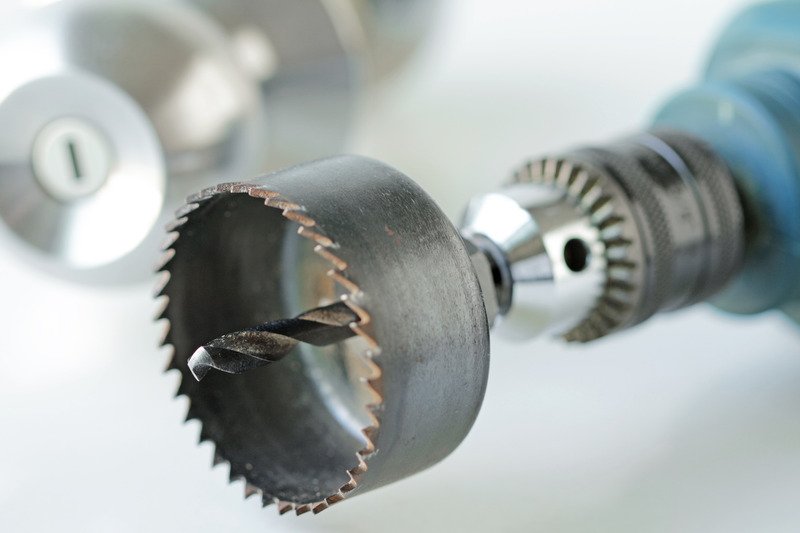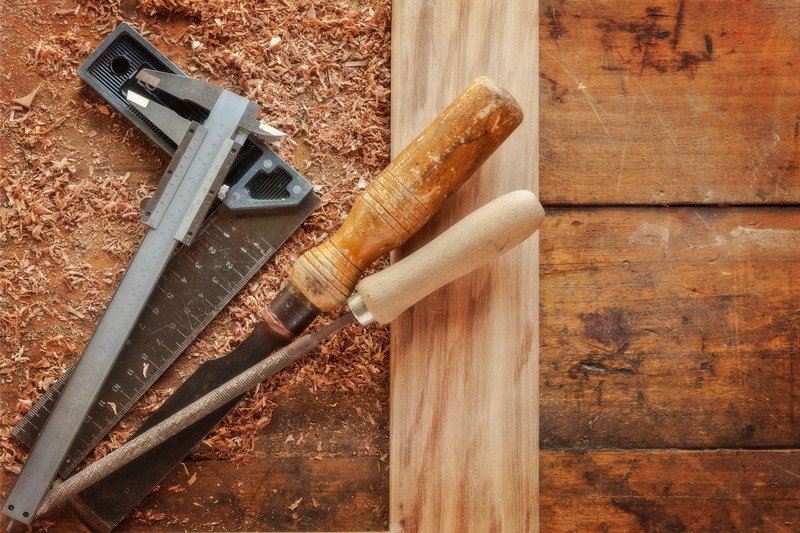Slicing and shaving timber may be a straightforward task for anyone with a rasp or some sandpaper, but creating a neat hole is a far more skilful discipline.
Wood is a beautiful material, but it can be surprisingly stubborn when adding a spyhole, hanging hook or decorative hole.
This guide explains how to cut a hole in wood using four leading methods. We’ve ignored saws as one of those options, as even the best hand saws struggle to make compact incisions.
We’re assuming you’ll be looking to make a relatively small hole of the kind demonstrated in this informative YouTube video rather than attempting to chop out a massive chunk of timber.
Tools & Materials

If you want to know how to cut a hole in wood, you need to decide which tool you’ll use. Our four recommendations are a drill bit, a jigsaw, a chisel or a brace. The latter has fallen out of fashion but retains more granular control than an electronic machine, especially given a jigsaw’s propensity to drift off its core line. Since most holes in wood are circular (for hanging, storing votives or adding decoration), our preferred method is a drill bit.
Whichever approach you favour, you’re also likely to need some low-tech tools and materials:
Tools
- A pencil.
- A laser ruler.
- A workbench.
- A small hammer.
Materials
- A vacuum cleaner removes dust from the timber, so it’s easier to inspect.
- Wear gloves to protect your hands against splinters.
- Protective eyewear. Don a mask or goggles, even if you already wear glasses.
How To Cut a Hole in Wood — Step-by-Step Instructions

Having established the different tools that may be required, let’s consider the processes involved in the various cutting methods. We begin with our go-to choice for hardwoods and softwoods alike:
Drill Bit
If the hole you’re looking to make is (a) circular and (b) modestly sized, a drill bit or spade bit will be perfectly suited to the task.
As their name suggests, hole saw drill bits are larger circular attachments mounted on a drill bit spindle. When inserted into the drill, their serrated teeth rotate at sufficient speed to create a perfectly circular hole larger than a spade bit or standard drill bit could accomplish.
To create a hole in wood using a drill bit:
- Using the pencil, mark the points on the wood where the centre of each hole will be bored.
- Adjust the chuck on the drill to accommodate a bit of the appropriate diameter, ensuring it’s sufficiently tight to deliver a straight and true hole without wobbling or coming loose.
- Drill downwards, applying sufficient pressure to create a recess, or punch through the wood.
- If you’re making multiple holes, use a laser guide to ensure the centre of any existing hole is fully aligned with the centre of the next one.
Pro Tip: For precision work, a drill with laser light will ensure the bit touches the timber at the precise location required.
Jigsaw
As a multipurpose cutting tool, jigsaws can be excellent for cutting holes in timber if they don’t need to be circular. After all, it’s far easier to hand-cut a series of straight lines than a perfectly consistent 360-degree arc, as even the most experienced carpenter will attest.
Read our in-depth review of the best jigsaws on the UK market to decide which model best suits your needs.
We recommend a jigsaw over a reciprocating saw for this DIY job because it’s much easier to be accurate and delicate with the former than the latter.
- Using a pencil, define the area you’ll be cutting with the jigsaw.
- Clamp the wood on the workbench (this might also be advisable for drilling, though some people prefer freehand drilling).
- If you’re not creating a hole at the wood’s edge, fashion an initial hole with a wide drill bit, giving you space to insert the blade.
- Fit the narrowest blade, which will comfortably slice through the timber, to ensure you displace minimal additional material during cutting.
- Turning the jigsaw on, slowly follow the line, pausing at angular changes but continuing in a smooth linear motion along curves.
- Once you’ve returned to the starting point, use the hammer to tap out the cut section.
Pro Tip: As an alternative to step 3, you could make a plunge cut with the jigsaw blade. Rest it almost horizontally so the tip is on the cutting point. Turn it on and gradually angle it downwards so the blade eases its way into the timber.
Brace
It’s increasingly rare for a DIYer to have one of these in their toolbox, yet the humble brace remains an effective method of creating a hole up to 7.5cm in diameter.
Turning a handle midway along the shank drives the bit into the wood, usually supported by a ratchet action in confined spaces.
- As with the drill, mark the centre point where each hole will stand with a pencil.
- Insert your bit into the chuck and tighten it by turning the handle anticlockwise until it’s tautly held.
- Slowly turn the handle clockwise until the lead screw emerges from the back of the timber.
- Turn the timber over and repeat the process – continuing from the front could cause splintering along the back.
Chisel
This technique is the crudest on our list, and it’s also poorly suited to circular holes. A wood chisel is best for square or rectangular recesses rather than holes.
Remember that chisels are more commonly used for tidying joints or trimming edges — they’re also far better at creating holes at the side of a piece of timber than in the centre.
- Choose your preferred chisel. Firmer chisels can be driven in with a hammer, whereas a bevel-edge will deliver more delicate work but may struggle with denser timbers.
- Using the laser ruler and pencil, mark where your hole will go.
- Methodically chop away at the wood, using a hammer to tap the end of the chisel’s handle if necessary.
- Avoid driving into the wood more deeply on one side than on another, pausing regularly to inspect progress.
Chisels aren’t renowned for their finesse, so you may wish to invest in fine sandpaper to smooth off any imperfections they leave behind.
Final Thoughts

With four different methods to consider, knowing how to cut a hole in wood involves more than simply donning goggles and breaking out a pencil.
Factors such as your upper body strength, the quantity and precision of holes you’re planning to make, and whether these holes will go straight through the wood or merely create recesses will all influence your choice.
If you follow our advice and go down the drill route, our guide to the best cordless combi drills is well worth a read.

